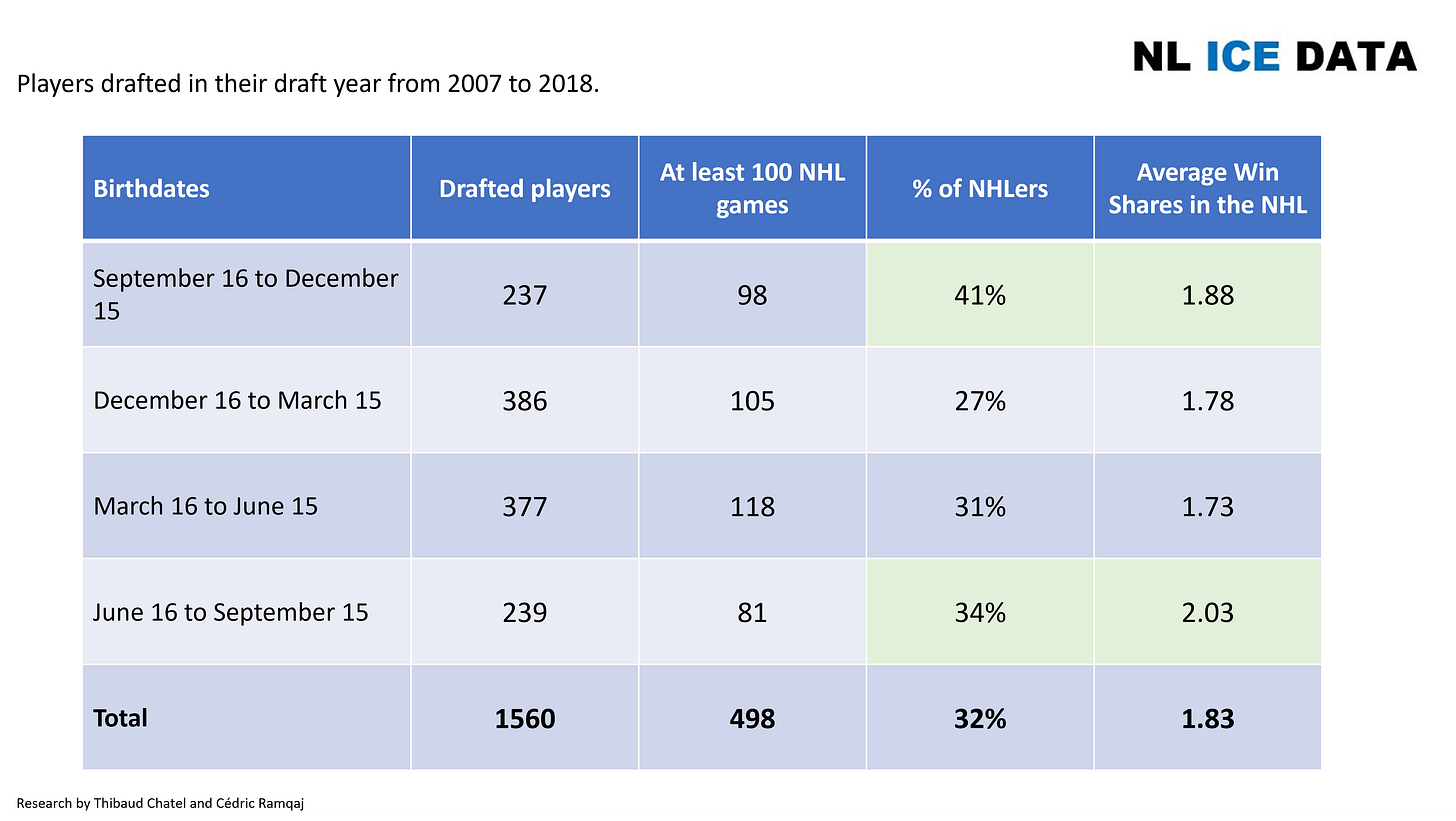NHL Draft has a bias with age
How to deal with it
We revisit our DRAFTe model based on new observations. Here is our revised thinking.
Age adjustment
Age has a significant impact on evaluation and future success, as Byron Bader has highlighted in the past.


With less sample than Byron, we split one year of birthdates into four quartiles: September 16 to December 15, December 16 to March 15, March 16 to June 15, June 16 to September 15. Then looked at how many players played at least 100 NHL games.
We chose to put the entry barrier at 100 games, symbolizing established player with multiple seasons presence in the big league, or at least someone that really got a strong shot at establishing himself. Also to include as many seasons as possible, when putting the bar at 200 NHL games would have removed a lot of 2017 and 2016 players.
At first, we based ourselves on the percentage of players that became NHLers, but we realized later that we might have been led into the wrong.
Why so many Winter born players are drafted? If you look at Canadian or American census, there is no natural difference in births between months of the year. So, picking up over twice as many Winter born players compared to Fall born players (look at Byron’s numbers) is the result of a bias from NHL organizations. Why? There might be multiple reasons, from Winter born players always being older than Spring and Summer born players and ahead of them in their development, to the thinking that Fall born players are, to the contrary, already too old and having a supposed natural advantage (NHL organization applying a bias to correct a supposed bias…).
BUT, we believe that it led to an artificial increase of the volume of players drafted from Winter months, to the point where the 27% of draftees making the NHL is probably too low because the original numbers of drafted players was too high. By comparing that 27% to the average 32%, the disadvantage of Winter born players in our first version of the model was severe. And, to the opposite, the advantage of Fall born players (41% making the NHL) was very high.
We came up with a solution to remove the bias of drafting too many or too few players based on their birthdate by looking at the career performance in the NHL. By focusing on NHL careers, we removed the “noise” of all the players drafted but who didn’t make the big league. Looking at the Average Win Shares in the NHL, Fall born players are still looking good, while Summer born players move on top. Winter and Spring born players are still below but the difference between each quartile is much smaller that way, as the age adjustment will be.
Check out the revised ranking for the 2022 DRAFT.
Liked that post?
And consider supporting us with a coffee !
You can also follow me on Twitter pages here and NL ice Data here




